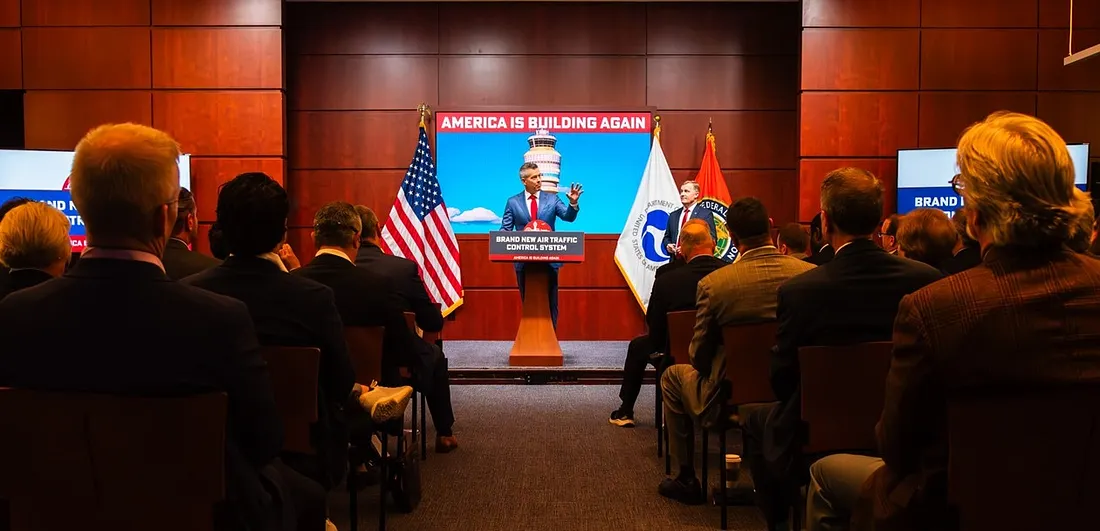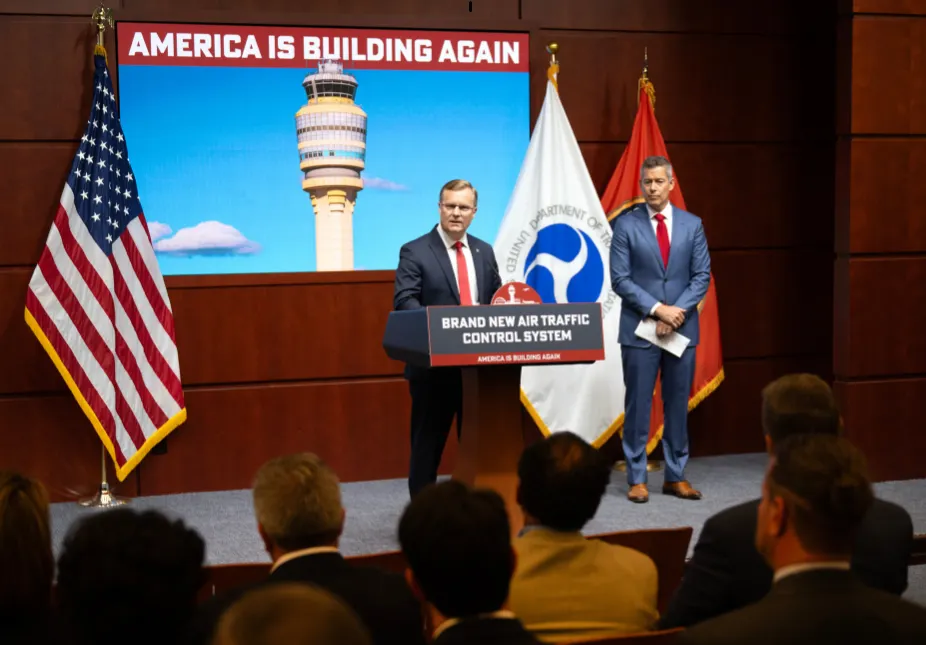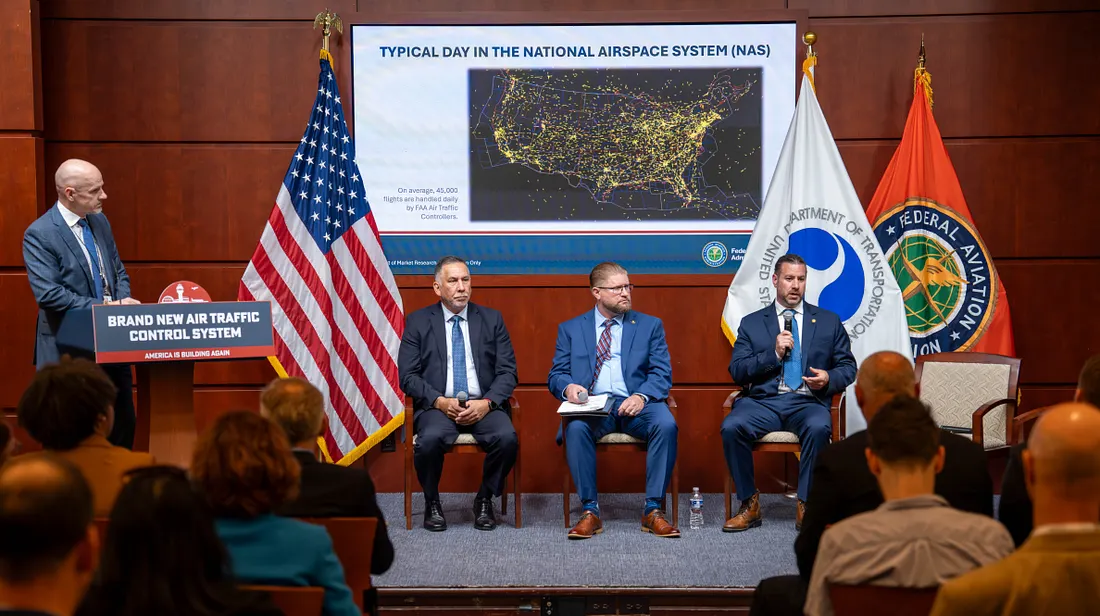U.S. DOT and FAA Host Industry Days to Innovate the Air Traffic Control System
“This is the most important infrastructure project in the United States.”
U.S. Secretary of Transportation Sean P. Duffy spoke these words during the kickoff of Industry Days, a forum to meet top innovators to help lead the building of a brand new, world-class air traffic control system.

This week several hundred industry attendees had a unique opportunity to hear from key FAA officials about plans to build a new state-of-the-art air traffic system and get insights on the state of the current system. Industry representatives also were able to tour the William J. Hughes Technical Center for Advanced Aerospace for a hands-on view of current and emerging air traffic technologies.
Bringing industry together is an important step in the FAA’s efforts to engage with the best and the brightest in the industry to help make concrete change. As FAA Acting Administrator Chris Rocheleau put it,
“We are all here today as part of our commitment to take bold steps to build a new, world-leading air traffic system that is safe, more efficient, more resilient, and prepared to meet the demands of the future.”

The FAA manages more than 16 million flights every year. However, the infrastructure that supports this system — used daily by controllers — requires swift modernization. To address this, the agency wants to build a brand-new core infrastructure including radar systems, software, hardware and telecommunications networks. The FAA intends to engage a single integrator to oversee the implementation of this new air traffic infrastructure, leveraging the most advanced technology available today.
By building a new air traffic system, the FAA will enhance aviation safety, reduce delays, and enable the future of air travel. This initiative also ensures that dedicated air traffic controllers are equipped with a reliable, modern system that meets the high standards their critical work deserves.

The National Airspace System faces a rapidly growing, complex, and demanding aviation sector, with increased commercial air travel and new entrants — including drones, advanced air mobility, and commercial space. This new system will not only meet today’s air traffic demands but will also be equipped to safely accommodate the future of aviation.
Learn more about the Brand New Air Traffic Control System.
